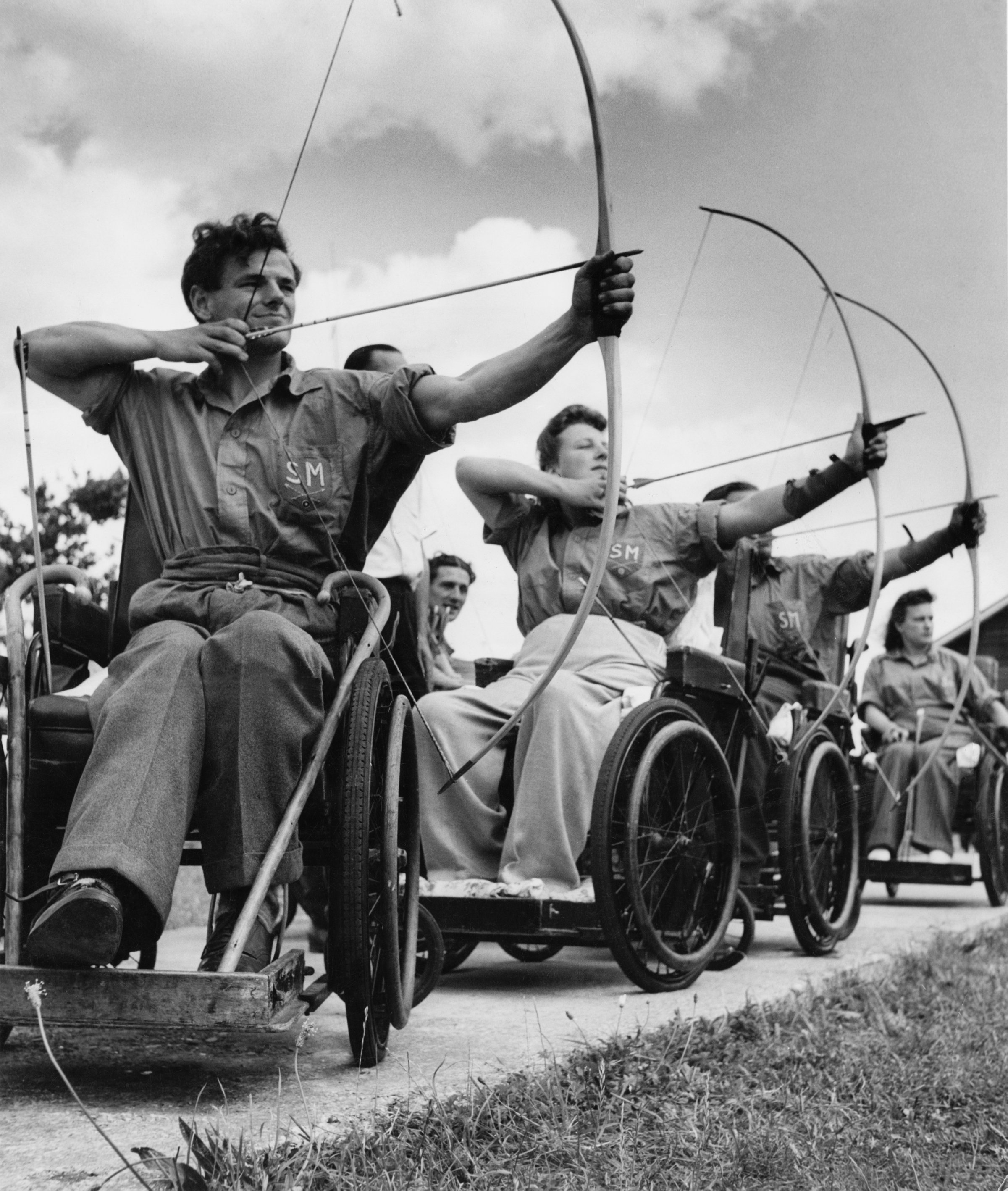
In the decades since the event was first held, Paralympic Games has grown dramatically from its origins as an archery competition among 16 wheelchair-bound British World War II veterans. That first contest took place on July 29, 1948, at the Stoke Mandeville Hospital, about an hour east of Oxford.
The event was the brainchild Sir Ludwig Guttmann, a German neurosurgeon who fled Nazi Germany and left a job at Oxford University to head up the National Spinal Injuries Centre at Stoke Mandeville. The facility had opened in March 1944 to care for service members and civilians who had suffered spinal cord injuries during the war, Ian Brittain writes in The Paralympics Games Explained. (More patients were admitted after D-Day, according to the science journals Nature and Brain.)
Guttmann’s demonstration of the patients’ athletic skills was merely a side benefit of a new rehabilitation philosophy, which emphasized helping paraplegic patients develop their strength even if they would not walk again. Previously, such spinal injury cases were considered “hopeless” and many victims lived for a matter of weeks, or at most a couple of years, and often died of sepsis and kidney failure. The choice of archery for the first games was strategic. Practically, the sport plays to their upper body capabilities, but “it was also one of the very few sports that, once proficient, paraplegics could compete on equal terms with their non-disabled counterparts,” Brittain writes. “This led to visits of teams from Stoke Mandeville to a number of non-disabled archery clubs in later years, which were very helpful in breaking down the barriers between the public and paraplegics.”
Get your history fix in one place: sign up for the weekly TIME History newsletter
Brittain argues that participation in the so-called “Stoke Mandeville Games” grew partly thanks to patients and doctors moving among different spinal units and attention that came after related research was published in a now defunct journal called The Cord. The event began attracting international athletes in 1952 when Dutch ex-servicemen joined.
By 1953, when TIME covered the competition, the event attracted an audience of 3,000 to watch 200 athletes from eight nations. It featured netball (similar to basketball), snooker (similar to pool), archery, table tennis, javelin, shot put and swimming. While the timing of the 1948 archery demonstration coincided with the 1948 Summer Olympics in London — and some scholars debate whether that was intentional — the first Paralympic Games specifically held as a parallel to the Olympics took place in Rome in 1960 with 400 athletes from 28 countries, while the first winter games took place in 1976 in Örnsköldsvik, Sweden.
The 2018 Games will run from March 9 to March 18 in PyeongChang, South Korea.
More Must-Reads from TIME
- Inside Elon Musk’s War on Washington
- Meet the 2025 Women of the Year
- The Harsh Truth About Disability Inclusion
- Why Do More Young Adults Have Cancer?
- Colman Domingo Leads With Radical Love
- How to Get Better at Doing Things Alone
- Cecily Strong on Goober the Clown
- Column: The Rise of America’s Broligarchy
Write to Olivia B. Waxman at olivia.waxman@time.com